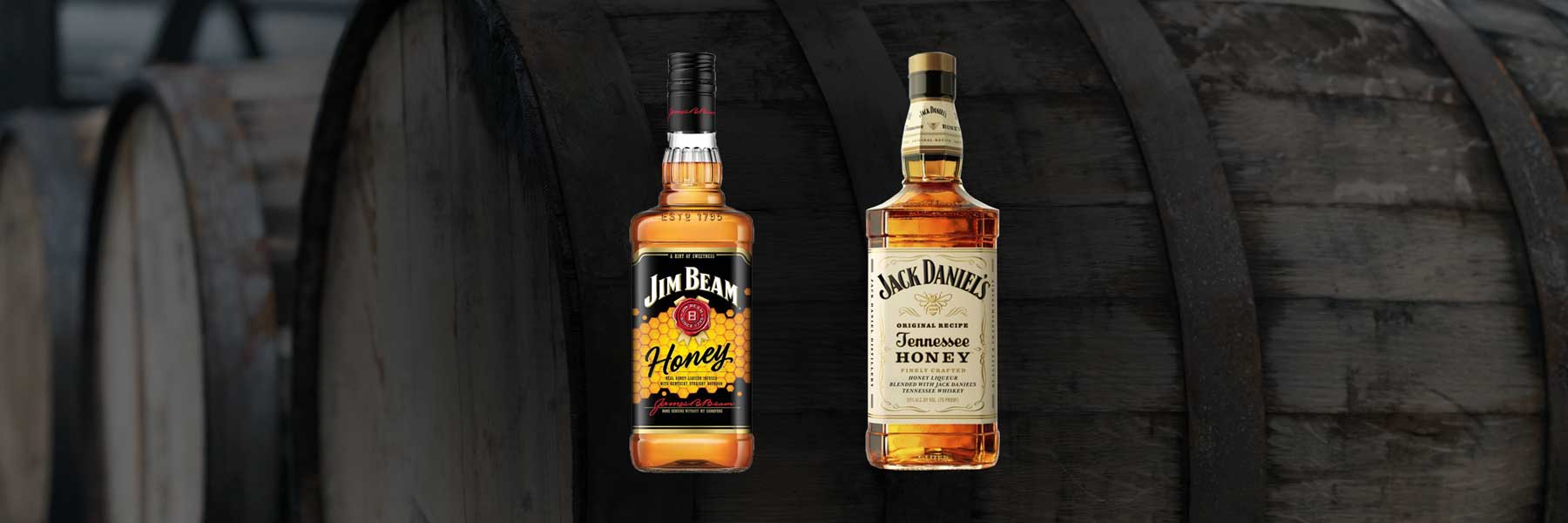Seagram’s 7 vs VO Whisky | A Comprehensive Review
I’m not the first person to compare these whiskies, but I can pretty much guarantee that my review will stand apart from the crowd and be the most in-depth you’ll ever read.
After my experience with Seagram’s 7 vs VO whisky. , I wanted to review the intricacies of the two and draw a comparison between these two bottles.
Let’s begin with Seagram’s VO. I’ll tell you that you probably won’t like it initially. It’s not very flavourful, but the smell is quite intense when you open the bottle and pour it. In most cases, I believe it’s most suitable for a persistent drinker who understands that whisky is supposed to burn a little. However, if you’re less experienced, you may not like it.
Still, once you’ve drank it a few times and got used to the pungent smell, you’ll likely appreciate it for all it’s worth. Heck, you might not go back to your favourite brand.
I’ll definitely say that it’s not a nice-smelling whisky, and there are better ones on the market. Much of this comes from the acetone or nail polish scent it pushes upon opening. This is the complemented by apricot and other citrus smells.
Seagram’s VO has been aged for about six years in barrels and was created specifically for Joseph Seagram’s son for his wedding.
Now, let’s turn to Seagram’s 7. Again, this bottle isn’t for the faint of heart because you instantly get a whiff of ethanol, which isn’t pleasant. However, it has a much fruitier undertone to it, and the sweetness is much better than what you get from VO. Plus, there’s a hint of vanilla, which rounds things out.
Though I wouldn’t necessarily call it a smooth finish, it is short and sweet. You’ll definitely continue tasting the caramel within, so it will likely hit the spot if you have an affinity for sugar.
Overall, this whisky is aged for at least four years in charred and new white oak barrels. Sometimes, it’s done in used barrels. It must be that long because they often age it in large quantities, and they want the oak to soak into it all.
Seagram’s 7 vs VO Whisky: Quick Look Comparison
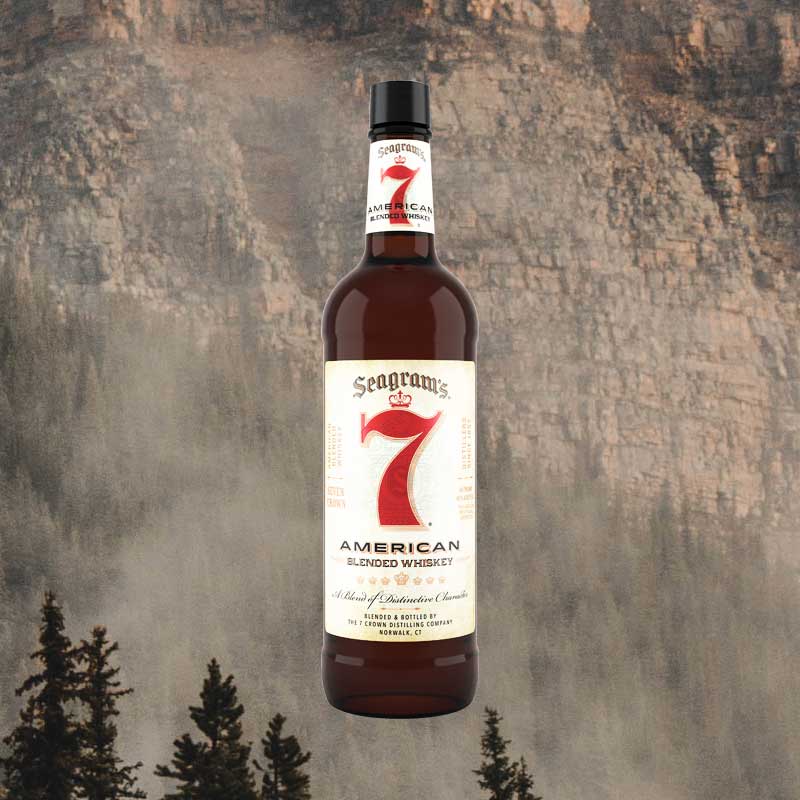
| Nose | Caramel, ethanol, mixed dried fruits. |
| Palate | Sugar, caramel, vanilla. |
| Mouthfeel | Thin, vaguely sweet, chemical-style flavour, burnt, metallic. |
| Finish | Short, caramel. |
| Age | 4 years (minimum). |
| Cask/Barrels | White oak barrels, new & charred. |
| Strength | 80 proof / 40% ABV |
| Price | $16/£13 |
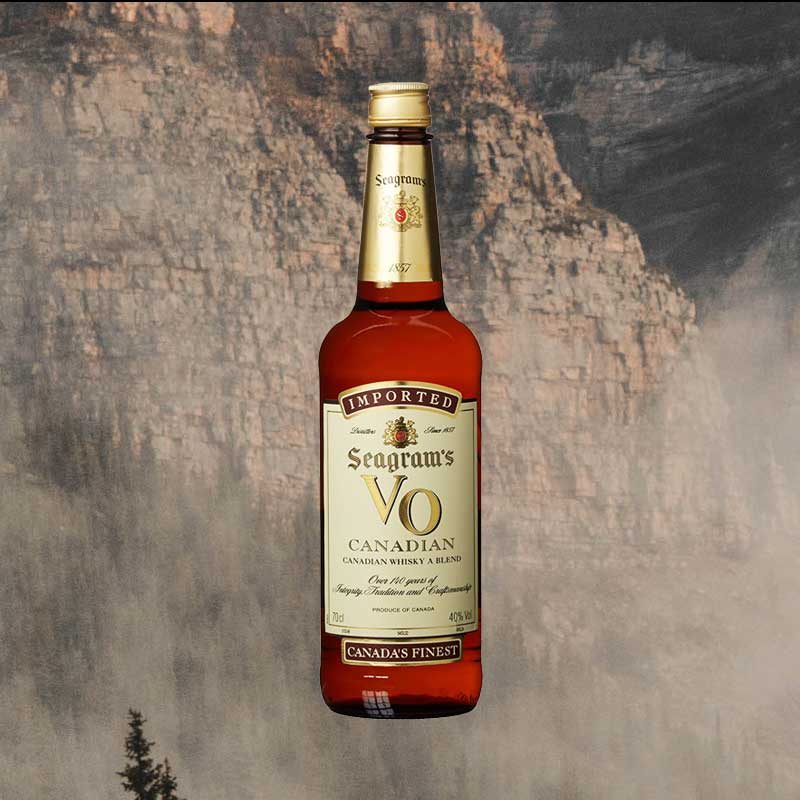
| Nose | Apricot, nail polish, rye & lemon. |
| Palate | Cinnamon, apple, rye spice, vanilla. |
| Mouthfeel | Fruity, acidic, thin, hot |
| Finish | Bitter, medium length |
| Age | 6 years (minimum). |
| Cask/Barrels | White oak barrels, new & charred. |
| Strength | 80 proof / 40% ABV |
| Price | $26/£21 |
Seagram’s VO Whisky
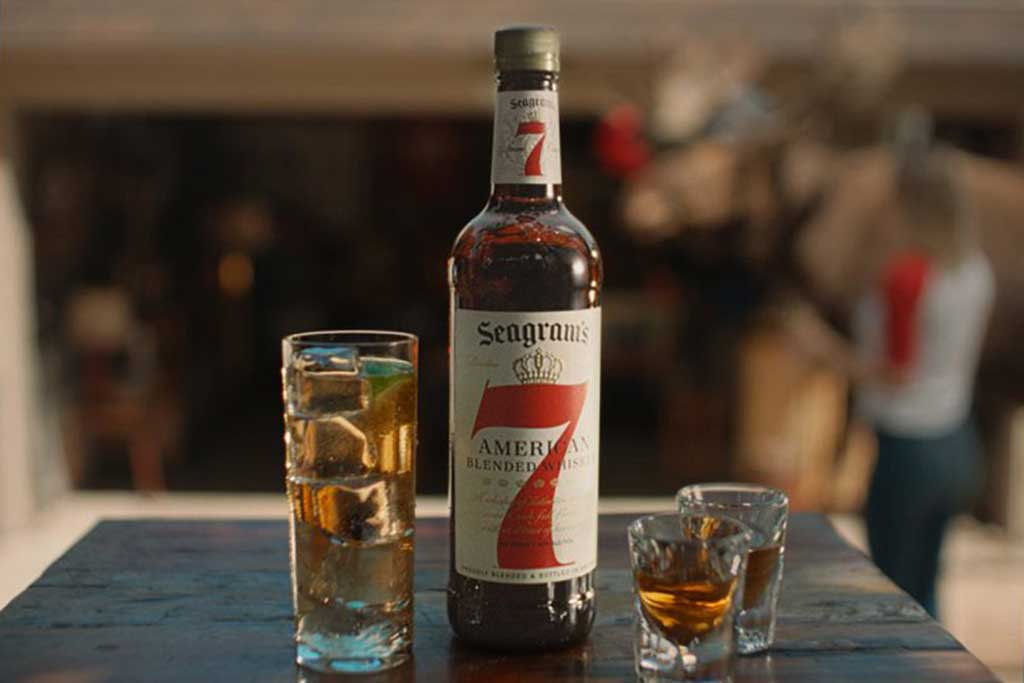
Seagram’s 7 Review
The first thing you should know about Seagram’s 7 is that it’s a blended American whiskey. This means it contains 20% straight whiskey, whilst the remaining 80% is made of neutral grain spirits – including colourings and flavourings.
Interestingly, Seagram’s was originally a Canadian whisky brand. Founded in 1857, in Waterloo, Ontario (Canada) it was once the largest multinational conglomerate owner of alcoholic beverage lines in the world.
After prohibition, Seagram’s later established their business in the United States where they produced several lines of American-made whiskies including their Seagram’s VO and Seagram’s Seven Crown brands.
In 2000, the Seagram’s conglomerate was fragmented with the spirits division of the business being sold to Pernod Ricard and Diageo. In 2018, with the VO line was sold to Sazerac in 2018 whilst the Seven Crown was kept by Diageo.
The nose focuses primarily on ethanol. I wouldn’t say it’s overpowering or overwhelming, but it will take some getting used to. In fact, the best way to enjoy it is to let it air out a bit so that you can detect the fruity and caramel tones. They’re a lot warmer than the smell of fuel.
On the palate, I have to say it lacks much texture or body, and it feels like there’s no vigour or interest to it at all. In fact, I believe it could turn to water if given enough time. All right, that might not be possible, but you get my drift – it’s slightly boring.
If you’re someone who likes whisky on the sweet side, this might be right for you. There’s an artificial caramel flavour, and the vanilla makes it pop. However, I also experienced tones of metal, and it seemed more chemical in nature.
The finish is quite short, and it leaves you with a mild warm sensation. However, the aftertaste is primarily caramel.
I wouldn’t say it’s necessarily bad, but it’s definitely not on calibre with other brands on the market such as Jack Daniels or Jim Beam. Still, it’s palatable, especially when using it in mixed drinks. For example, you can mix it with Coca-Cola, 7-Up, or ginger ale to make it better, but I don’t recommend drinking it neat or with water.
Seagram’s 7 facts
· There’s no age statement on the bottle, but research indicates that it’s at least four years.
· It features 25 percent whiskey (American-crafted) and 75 percent neutral grain.
· Diageo owns Seagram’s 7 Crown, which is currently made in Norwalk, CT.
· Initially, the whiskey was produced by Seagram’s itself, which was a Canadian company found in Montreal. However, that went bankrupt, and the assets were sold to other companies, such as Diageo, Coca-Cola, and Pernod-Ricard.
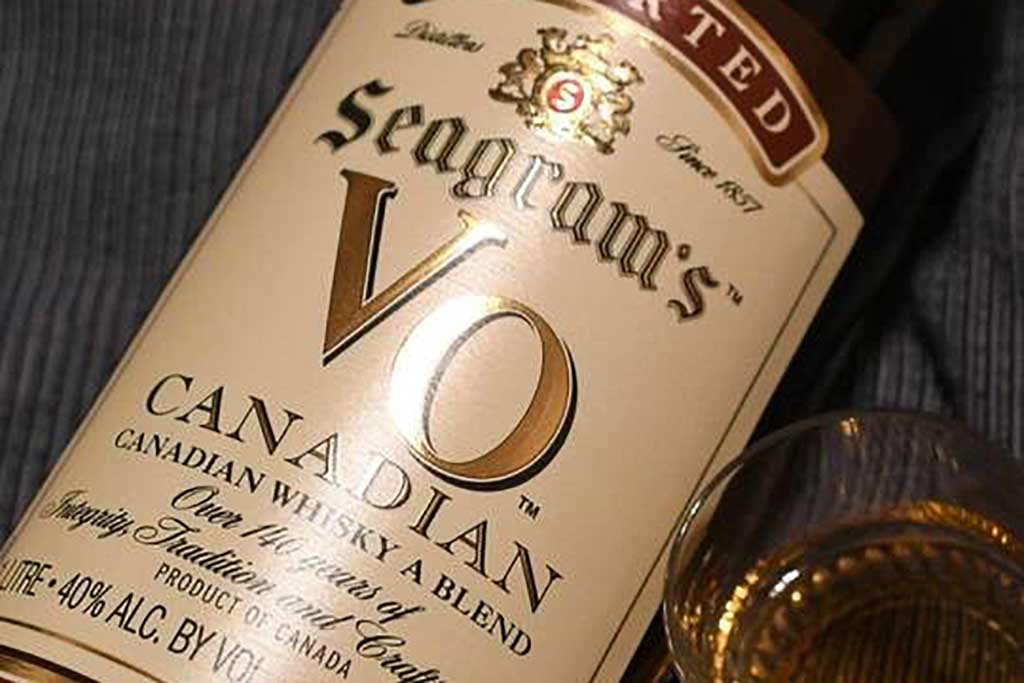
Seagram’s 7 vs VO Whisky: VO Review
When you pour Seagram’s VO into the glass, you’ll see the rich, gold colour. It’s normal for whisky, and that’s how it should be, in my opinion. However, you may start to wonder if there’s water or alcohol in the bottle because the nose isn’t noticeable. In fact, I’d say it’s pretty weak.
As you take a sniff, you initially think of acetone or nail polish, and that’s unpleasant. It will likely take you for a walk down memory lane when you drank moonshine you and your friends made in the basement of one of your parent’s homes. Though that’s not necessarily bad, it’s not something you prepare for, so it might take time to get used to it.
After the initial smell of ethanol, you can experience the hints of lemon, rye spice, and apricot. I have to say the nose tone is very acidic and borders on medicinal. It’s not something everyone can handle. Still, the body lacks much texture, and it almost feels like it was watered down to some degree.
On the palate, you’ll get the same feeling of: “Is this alcohol or water?” The taste is quite thin, and you won’t find much flavour to enjoy (or hate) here. Of course, you’ll soon know you’re drinking alcohol because of the burn. However, the other whisky notes are there, though they’re artificial.
In my opinion, rye spice is the most predominant flavour here. However, you’ll also find cinnamon, fake vanilla, and sour apple. I’m sure you know the difference between real and artificial vanilla extract. This one felt more acidic and less smooth and sweet.
The finish lasts for a medium length of time, but don’t be surprised when you experience the bitter aftertaste. It lingers for a while, so it will build while you drink it. In fact, you may not realize it has hit you hard until you’ve finished the glass because of the head.
I’ll say that this sounds like a negative review, but Seagram’s VO isn’t bad at all. I’d say it’s unremarkable at best, but it’s pretty easy to drink. There are hints of sweetness, but I found that the bitter finish detracts from it. If you like your whisky sweet and neat, this might not be ideal for you.
In fact, I wouldn’t recommend that you drink it on the rocks or neat. There’s just not much to it as a sipper. Still, it’s not cheap or expensive, so it can be great for cocktails if that’s your fancy.
Seagram’s VO facts
· VO likely stands for “very own.”
· It’s made at the Sazerac’s Old Montreal Distillery, which is found in Montreal, Quebec. Therefore, if you’re focused on Canadian-crafted products, this is the better choice compared to Seagram’s 7.
· The bottle doesn’t list the ageing length, but I’ve seen six years as the most prominent.
· This whisky was actually launched in celebration of Thomas Seagram’s wedding. His father made it just for his son on his special day.
Seagram’s 7 vs VO Whisky: The Comparison
Until now, I’ve talked about Seagram’s 7 and VO as individuals. However, it’s time to put it together to help you choose what’s best for you based on your needs and the information presented here.
Let’s consider the costs first. Both brands are similar in price, but Seagram’s 7 is a bit less expensive at $16. Seagram’s VO costs $26. If I’d compare on that fact alone, you’d see that the former is cost-effective compared to the other.
However, most people don’t go by price alone because it doesn’t tell them much. You’re focused on how it tastes and how well it holds up on its own or in a cocktail. Yes, you want to spend less, but you still need it to taste good.
Seagram’s VO might be the better choice here because of the apricot and lemon tones. It’s slightly sweet, but not as much as Seagram’s 7, with its caramel and fruit flavours.
There isn’t much to say about the alcohol content because they’re the same for both whiskies at 40% ABV / 80 proof. You’ll get the same alcohol per volume amount, regardless of your preferred option.
I will point out that both of these whiskies have an unpleasant smell, so that isn’t likely to be a deciding factor. Seagram’s 7 is more ethanol-based and burnt, while VO smells like nail polish or acetone.
The nose perspective is something most people wonder about. Seagram’s VO has an acetone scent, and you can’t get around it. However, Seagram’s 7 smells like ethanol, which is also unpleasant. Therefore, if your nose is sensitive, you’ll likely get a surprise when you open the bottle.
There are other aromas, but you have to wait and let them come to light. Likewise, there’s a chemical note to both, which is off-putting to some people. However, Seagram’s 7 is a little fruitier and sweeter, so I have to give it the win in that department.
In terms of body, there isn’t much difference between them; they’re both weak and thin. If you prefer spicier and sweeter for your flavour profile, I’d say choose Seagram’s 7. However, if you don’t like a ton of flavour, Seagram’s VO is the lighter choice.
Both whiskies should be enjoyed on the rocks or with water added. When you do that, it will tone down the chemical taste and smell and reduces the acids within.
I’ll say that it takes time to acclimate to both the Seagram’s 7 and VO. Overall, I recommend giving them time and letting them grow on you. Take them seriously, and you’ll get rewarded for that.
Overall, these two are quite similar to each other in terms of taste, body, and fullness. However, the nuances give you a better idea of what might work for you based on your preferences.
Let’s talk about finishes now. Seagram’s 7 is short and tastes of caramel while it goes down. However, Seagram’s VO takes longer to finish and provides a more bitter aftertaste. If you like a kick at the beginning, VO is the best choice, but if you want a shorter finish, Seagram’s 7 is your best bet.
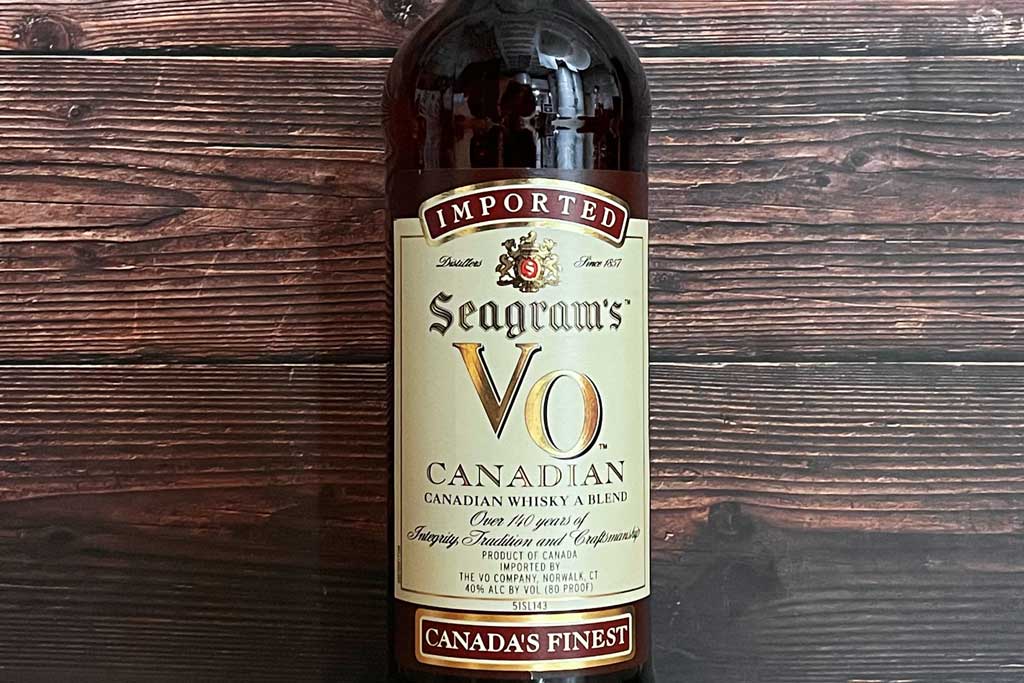
Seagram’s 7 vs VO Whisky: Final Thoughts
I’m coming full circle now. I’ve talked about the many attributes of each whisky today, telling you which one might be more preferred over the other. Still, you’re probably wondering about my thoughts on the matter.
To do this as honestly as possible, I’ll score both whiskies on five criteria. The final score will tell you my preference, and then I’ll explain my reasons.
| Seagram’s 7 | Seagram’s VO | |
| Colour | 10/10 | 10/10 |
| Aroma/Nose | 8/10 | 9/10 |
| Mouthfeel | 7/10 | 8/10 |
| Taste/Palate | 8/10 | 9/10 |
| Finish | 8/10 | 7/10 |
| Total Points | 41/50 | 43/50 |
Author’s Pick
There really isn’t much of a comparison here. Both whiskies were quite similar; though there were nuances here and there, things evened out in the long run.
I chose these five criteria because they focused on more than just taste or price, which is what many people consider when reviewing products. Instead, I believe these numbers sum up my feelings about Seagram’s 7 and VO. The winner happens to be VO but not by much.
These two whiskies compared nicely to each other in colour because they were both a deep gold. I find that palatable.
On the nose, they both seemed to smell like chemicals, though different ones. While Seagram’s 7 was more fruity and sweet, the burnt and metallic mouthfeel left me wishing I’d drank something else. Plus, the spicy sweet taste of VO is something many people crave because it just seems so whisky-esque.
Again, the mouthfeel just wasn’t the best for Seagram’s 7. Though the sweetness was nice, the burnt and chemical flavours left something to be desired. Overall, VO’s citrus was a better choice, even though I usually prefer sweet. Still, it was a little overpowering with the citrus and nail polish smell.
I think Seagram’s VO had a smoother feel to it than Seagram’s 7. Plus, the spices hit fast and built up as you continued drinking. Many people like that, so it’s not necessarily bad. There just wasn’t much to Seagram’s 7 other than caramel and sugar, and even that tasted fake.
In the finish, I believe Seagram’s 7 won that round. I like a shorter finish, and the caramel was a lot better than the bitter taste from Seagram’s VO. However, the latter has that classic whisky feeling, and most people expect that, so it could be a toss-up for you. The bitter taste was off-putting to me.
Overall, I’ll say that Seagram’s VO is the overall winner for me. Though they both compared well, and the scores weren’t that different, it still won because it had a slightly more pleasant aroma, mouthfeel, and taste. If you can overlook the bitter finish, you have it made.
However, if you’re someone who likes a touch of sweetness to their whisky, then Seagram’s 7 is likely the right choice. Regardless, you probably won’t want to drink these neat or on the rocks. It would be best to mix them with ginger ale or other sodas to take some of the edge off.




